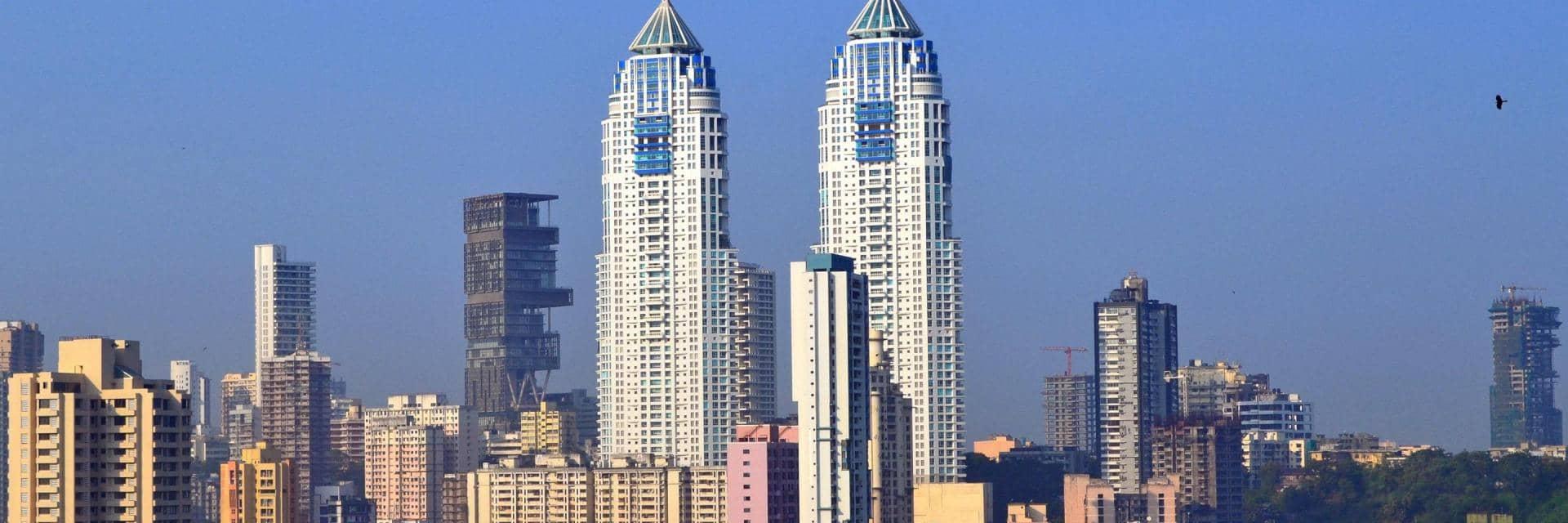
Market Perspectives March 2021
Encouraging hopes of a vaccine-driven recovery are keeping investors in good spirits.

05 March 2021
8 minute read
By Narayan Shroff, India, Director-Investments
Barclays Private Bank discusses asset allocation views within the context of a multi-asset class portfolio. Our views elsewhere in the publication are absolute and within the context of each asset class.
In the latest turn in the COVID-19 pandemic, India faces a resurgence of cases. So far this is concentrated in few states, but the risk of renewed lockdowns looms large.
If called for, this time we believe that the government may resort to strict localised quarantine measures rather than countrywide or statewide lockdowns. Also local authorities seem better prepared to handle the situation, aided by better medical infrastructure and the vaccination drive.
The measures, if they become more widespread and for longer periods, carry the risk of slowing the growth momentum witnessed in recent months. However, we believe that, like earlier episodes, major risks will be mitigated this time, both in terms of the economic recovery and in the financial markets. Having seen the light at the end of the tunnel, FOMOA (fear of missing out again) should continue to provide a strong support to the market on any retracements.
Growth rebound
From a headline numbers perspective, growth in the three months to December came in positive after output contracted in the two consecutive quarters. The recovery is led by both private consumption spending and increased government spending. A sharp fall in COVID-19 cases, gradual unlocking of society and festivals created pent-up demand from consumers.
In the last decade, growth in private consumption has been the mainstay of India’s economic performance. In the wake of the pandemic, people’s finances have been impacted, as can be seen by the large withdrawals from the government employee provident fund scheme. As such, much of the heavy lifting in encouraging growth will probably be done through government spending.
Recent announcements related to privatisation of public sector undertakings, monetisation of public infrastructure assets and increased spending for infrastructure projects should be viewed in this context.
Fiscal spending in times of crisis
The Union budget for financial year 2022 suggests that the government will support the economic recovery even at the cost of fiscal slippages.
Government expenditure is aimed at increased capex outlays, especially in infrastructure sectors. Besides, spending is also focusing on additional infrastructure financing options by further relaxing fund-raising norms of infrastructure investment trusts (InvITs) and real estate investment trusts (REITs) and monetisation of operating public sector assets like roads, railways and airports. The government has also extended its performance-linked incentive scheme to 13 more sectors to support large-scale manufacturing of electronic equipment.
Sticky inflation
Despite the collapse in economic activity, consumer price inflation averaged 6.6% in 2020, largely led by higher food prices. Food inflation is expected to cool as supply side issues are resolved and economic activities resume. The Reserve Bank of India (RBI) estimates that consumer price inflation will remain in its comfort zone for next few quarters. Core inflation is likely to remain high on account of higher domestic and global prices, stronger commodity prices and the improving pricing power of manufacturers.
Stable inflationary expectations for the coming twelve months provide room for the RBI to support growth while keeping rates low and ensuring sufficient liquidity in the system.
Equities benefiting from cyclical rebound
The outlook for equities remains positive, the asset class benefiting from the cyclical rebound being seen in the economy. Earnings momentum continues to be positive, driven by sales growth (including reflationary growth), market share gains, lower cost of financing and cost cuts seen across sectors.
Earnings growth should broaden as the government continues with its high-paced capital expenditure programme. This is a departure from the more polarised earnings growth seen in a small set of companies led by consumer-focused ones last year.
Indian equity markets continue to receive more foreign inflows. This trend will probably persist given the strength of the revival in activity and corporate earnings. However, we suggest taking incremental risk exposure in equities by introducing more cyclical and opportunistic ideas and more small and mid-cap equities, rather than increasing the overall tactical Indian rupee budget.
Equity returns may be much lower than experienced in 2020 in coming years while market volatility is likely to remain elevated. Any corrections in the market should be shallow and short-lived.
Quality companies underperform
In recent months, companies with stable earnings and low leverage – especially from consumption-oriented sectors – have underperformed the broader markets. This is driven by an anticipated pick up in earnings growth, after a hiatus of five years or so, in sectors such as real estate and cement and steel. Lenders with good corporate loan books and the capital goods sector should benefit from the resurgence in private capex and increased government spending in infrastructure-related sectors.
Despite underperforming of late, we continue to prefer “quality”, sustainable businesses with strong earnings growth momentum in the medium term as we are still not out of pandemic-related uncertainties. As such, quality companies should continue to be part of the core equity portfolio. The satellite equity portfolio can have allocation to sectors witnessing cyclical recovery like metals, corporate lenders and infrastructure-linked companies.
While the gap in valuation between large capitalised (cap) and small or mid-cap equities has narrowed in recent months, small and mid-cap stocks seem preferable as the recovery in equities broadens.
Fiscal concerns pressure bond market sentiment
Unexpectedly higher spend announced in the Union budget has placed the estimated fiscal deficit for financial year 2022 at 6.8%. While the RBI has assured its continued support to bond markets and ensures systemic stability, participants remain cautious about the effectiveness of the central bank’s actions in face of higher borrowings.
The RBI’s principal focus this year is likely to be supporting economic revival, providing financial stability and the orderly evolution of the yield curve. We believe that market concerns, especially around the increased bond supply and any liquidity rollbacks, and the central bank’s actions may provide intermittent volatility and opportunities in the bond markets.
We may see some resumption in curve steepening as investors look to balance risk and returns. For now, we retain our preference for quality bonds in the up to the 5-year maturity segment while having more confidence in judiciously increasing our investable credit universe.
Asset allocation
As the effects of, and uncertainty around, the pandemic linger and as the economy revives, allocating assets with appropriate diversification remains key. Like last year, this one is likely to experience periods of elevated volatility and sharp sector rotation too.
At such a time, an allocation to global equities and gold, while averaging-in purchases with a preference for active management makes sense. While gold is traditionally held by Indian households, increasingly domestic investors are discovering the attractions of investing in global equities, with a bias to US and Chinese markets.
As we prepare for a post-pandemic world, private assets may offer ways to diversify portfolios while accessing many investment themes set to play out in this period. Such themes may include increased interest in pharmaceuticals and healthcare, technology, consumption, chemicals, supply chain and logistics, asset leasing, receivables financing and structured private debt. Additionally, the nascent Indian REITs and infrastructure investment trust market did well last year and should continue to grow for some time yet.

Encouraging hopes of a vaccine-driven recovery are keeping investors in good spirits.
This communication:
Any past or simulated past performance including back-testing, modelling or scenario analysis, or future projections contained in this communication is no indication as to future performance. No representation is made as to the accuracy of the assumptions made in this communication, or completeness of, any modelling, scenario analysis or back-testing. The value of any investment may also fluctuate as a result of market changes.
Barclays is a full service bank. In the normal course of offering products and services, Barclays may act in several capacities and simultaneously, giving rise to potential conflicts of interest which may impact the performance of the products.
Where information in this communication has been obtained from third party sources, we believe those sources to be reliable but we do not guarantee the information’s accuracy and you should note that it may be incomplete or condensed.
Neither Barclays nor any of its directors, officers, employees, representatives or agents, accepts any liability whatsoever for any direct, indirect or consequential losses (in contract, tort or otherwise) arising from the use of this communication or its contents or reliance on the information contained herein, except to the extent this would be prohibited by law or regulation. Law or regulation in certain countries may restrict the manner of distribution of this communication and the availability of the products and services, and persons who come into possession of this publication are required to inform themselves of and observe such restrictions.
You have sole responsibility for the management of your tax and legal affairs including making any applicable filings and payments and complying with any applicable laws and regulations. We have not and will not provide you with tax or legal advice and recommend that you obtain independent tax and legal advice tailored to your individual circumstances.
THIS COMMUNICATION IS PROVIDED FOR INFORMATION PURPOSES ONLY AND IS SUBJECT TO CHANGE. IT IS INDICATIVE ONLY AND IS NOT BINDING.